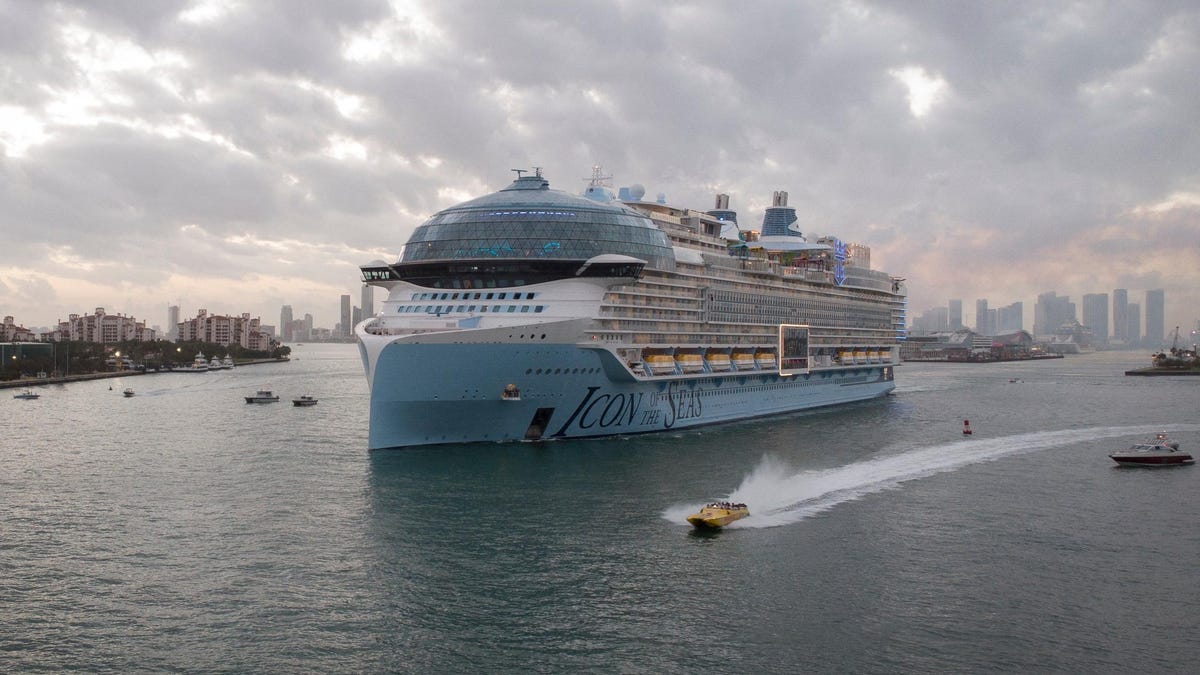Modern cruise ships are all-inclusive luxury contagion incubators on the water, and they are only getting larger. A recent report released by climate advocacy group Transport & Environment projects the world’s largest cruise ship will be eight times larger than the Titanic by 2050. Admittedly, we’re already past the halfway point. Royal Caribbean launched Icon of The Seas in January and the behemoth vessel is five times heavier than the sunken 1910s ocean liner.
The 2050 projection is based on the astronomic growth that the cruise industry has seen in the 21st century. In 2000, there were 222 cruise ships on the seas. Today, that figure is now 515 ships. The demand to sail on cruises has shown no sign of ceasing. Over the same time period, the number of passengers has risen from 7.5 million to 30 million, according to Cruise Market Watch. The T&E report summarized what kind of impact this would have on the environment:
“As a result of such rapid growth, these floating cities will emit more greenhouse gases and pollutants than ever before. Between 2019 and 2022, CO2 emissions from cruise ships in Europe grew by 17% despite the COVID-19 pandemic, and methane emissions surged by 500 percent.”
The report also notes that over half of the cruise industry’s passenger capacity is on these mega-ships, vessels that can carry more than 3,500 passengers. The Icon of the Seas can carry 7,500 paying customers and the hypothetical 2050 behemoth would be able to hold 10,500 passengers.
T&E suggests that the cruise industry should be incentivized to use cleaner fuels to reduce emissions and prohibited from sailing into environmentally vulnerable areas. The group also wants a tax on cruise tickets to fund climate projects, a respectable method to create some good off of stern-suspended infinity pools and endless margarita bars.
However, the policy proposals don’t impact all the areas where cruises aren’t sustainable, like when all of its passengers swarm seaside tourist destinations. In Europe, Amsterdam and Venice have already imposed restrictions on cruise operators. Hopefully, massive cruise ships don’t outlive the North Atlantic’s apex predator, the majestic iceberg.

